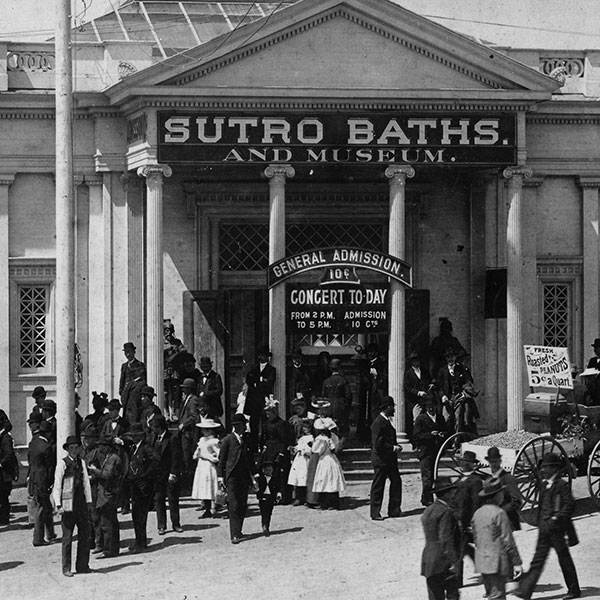Adolph Sutro was of German Jewish heritage, born in Aachen, Prussia. He was an inventor, entrepreneur and real estate developer who helped shape the landscape of late 19th century San Francisco. Interested in providing inexpensive recreation for the general public, he changed San Francisco's sparse and undeveloped Point Lobos area into a flourishing recreational complex that during its heyday boasted the Cliff House, Sutro Baths and Sutro Heights.
Made his fortune in the Silver Mines
Adolph Heinrich Joseph Sutro was born April 29, 1830 in Germany. Sutro arrived in California in 1850 and was well educated in the field of mining engineering and business. Sutro made his fortune in the late 1860s and 1870s at the Comstock Lode silver mines in Nevada where he designed and constructed a massive tunnel that drained and ventilated the flooded mines shafts. The construction of the Sutro Tunnel is recognized as having improved significantly the working conditions of the miners themselves, and diminished risks to their health and safety. This combination of ingenuity and benevolence characterized Sutro's later work in San Francisco.
Purchased San Francisco coastal land
After his work in the silver mines, Sutro moved back to San Francisco where he wanted his large real estate plans to help benefit others. In 1881, Sutro purchased 22 acres of undeveloped land at the edge of the city, which included a promontory overlooking the Cliff House and Seal Rocks, and provided breathtaking views of the Pacific Ocean, Mount Tamalpais, and the Golden Gate. Sutro turned this property into Sutro Heights, an elaborate public garden that was open to all citizens. Sutro laid out the grounds to take advantage of the ocean views and filled the garden with forests, decorate flower beds, statues and vista points.
 PARC, GGNRA
PARC, GGNRA

